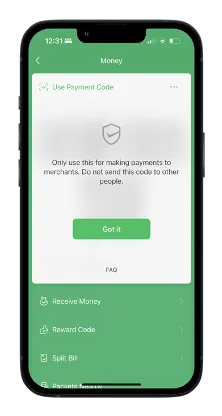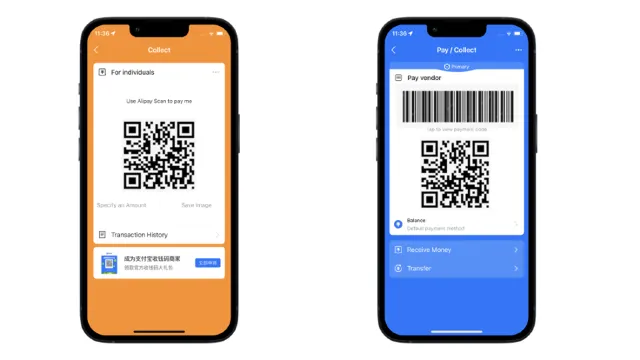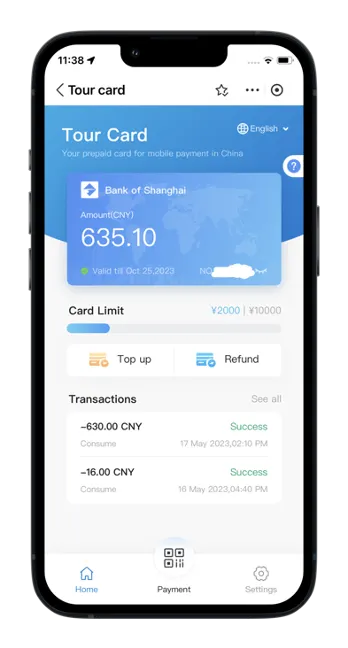Payment Methods in China: Tourist Guide
Catalogue
- The Rise of Mobile Payment in China
- 😉Super China Special Sale
- Popular Mobile Payment Apps: Alipay and WeChat
- Tour Card in Alipay
- Online Shopping with Alipay and WeChat
- Transferring Money with Alipay and WeChat
- Other Payment Apps
- Internet Banking
- Traditional Payment Methods
- Conclusion
Show More

China, with the world's largest population and rapidly expanding economy, leads the way in mobile payment adoption. As most consumers utilize QR-code-driven digital wallets, understanding the financial environment in China can be daunting for visitors.
However, fear not! This guide will equip you with everything you need to know about using digital and traditional payment methods in China.
Over the past decade, mobile payments have become an integral part of Chinese society. The majority of transactions are now conducted via apps and online, particularly with the younger, tech-savvy demographic. This shift has been fueled by the rise of "super-apps" like Alipay and WeChat that not only facilitate payments but also offer a plethora of other services like food delivery, ride-hailing, and social networking.
In fact, these digital wallets have become so popular that traditional payment methods like cash and credit cards have waned in popularity. They are now primarily used by the older generation and in rural areas where digital infrastructure is less developed.
Grab SUPER LOW hotel prices up to 80% and the SUPER LOW flight fares! Offer up to S$50 OFF on your Shanghai Flights & Hotels
Promotion period: Evergreen. Running the Shanghai theme till 30 April.
The dominant forces in China's mobile payment landscape are WeChat, developed by Tencent, and Alipay, a product of Alibaba. Together, these two giants dominate the market, becoming integral to the Chinese economy.
Alipay, locally referred to as Zhifubao, is integrated with other widely used applications like Didi for ride-hailing and Taobao, China's leading online retail platform. Many Chinese residents rely on Alipay for their daily financial activities.
Conversely, WeChat, known as Weixin locally, is not only a digital wallet but also serves as a social media platform, communication tool, and entertainment center with mini programs ranging from branded services to travel health codes. It's a staple in the daily lives of the Chinese population, with many using it for both communication and payments.
In 2024, WeChat Pay is made accessible to tourists in China, allowing them to make payments across a vast range of services and merchants. By linking their international Visa cards to their WeChat account, visitors can seamlessly transact in the country's predominantly cashless society.
Setting up Alipay and WeChat

Setting up these payment services is a relatively simple process. Both Alipay and WeChat have introduced the option of binding foreign bank cards, making it easier for tourists to use these services during their visit. However, make sure to download and set up these apps before your trip to China.
To register for Alipay or WeChat, follow these steps:
- Download the Alipay/WeChat app from your device's app store.
- Tap on the "Sign Up" or "Register" button.
- Enter your mobile phone number and tap on the verification button to receive a confirmation code via SMS.
- Enter the confirmation code, verify your mobile number, and complete the registration (passport may be needed) process.
- Once you've completed the registration, you can then link your Visa or Master bank card to the app.
How to Pay with QR Codes (Scan or be Scanned)
One of the unique aspects of mobile payments in China is the use of QR codes. There are two primary ways to pay using QR codes in China:

Left: Receive Payment, Right: Make Payment
Scanning the merchant's QR code: Open the app, tap on "Scan", and scan the merchant's QR code. Then, enter your payment amount and password to complete the transaction.
Present your payment QR code: Open the app, go to your payment section, and present your payment QR code to the merchant. The corresponding payment amount will be automatically deducted from your account.

If you use Alipay, instead of paying directly from your bank card, you can choose to open a temporary debit account with Bank of Shanghai through their Tour Card mini app. Just search for Tour Card and activate it. The account will last for 3 months after which it will be cancelled, and all the funds will be refunded. During the activated period of 3 months, you can only load up to a maximum amount of 10,000 CNY.
Online shopping is another area where mobile payments have become ubiquitous. Platforms like Taobao/Tmall and Jingdong have integrated Alipay and WeChat respectively into their payment systems, making it easy for users to make purchases.
If you need to split bills or make more informal payments, person-to-person transfers are a fantastic option. Both Alipay and WeChat offer this feature, with WeChat being the more popular choice due to its larger user base.
While Alipay and WeChat dominate the mobile payment landscape, there are other options available. UnionPay, the umbrella organization for all of China's card payment and ATM services, offers a mobile payment app. However, it has not gained as much popularity due to its single-function nature.
If you prefer a more traditional approach, you can also use internet banking. You can transfer money to larger Chinese banks like Bank of China or Bank of Communications using your foreign account's internet banking platform. However, do note that making direct payments to a business or individual with a bank account in China may not be possible due to international banking restrictions.
While digital payments are the norm in China, traditional methods like cash and cards are still accepted. However, cash is quickly becoming a thing of the past, and foreign cards often come with high inter-bank and overseas fees.
Navigating the world of Chinese mobile payments can be daunting, but with this guide, you should be well-equipped to handle any financial situation you encounter in China. Remember, while digital payments are preferred, traditional payment methods are still widely accepted. So whether you're shopping in bustling city markets or dining in a local restaurant, you'll be able to enjoy a seamless, cashless payment experience.
Trending Travelogues
Popular Trip Moments
Popular Travel Types
Popular Attractions
Popular Destinations
Recommended Attractions at Popular Destinations










Site Operator: Trip.com Travel Singapore Pte. Ltd. Travel License No. 02943










